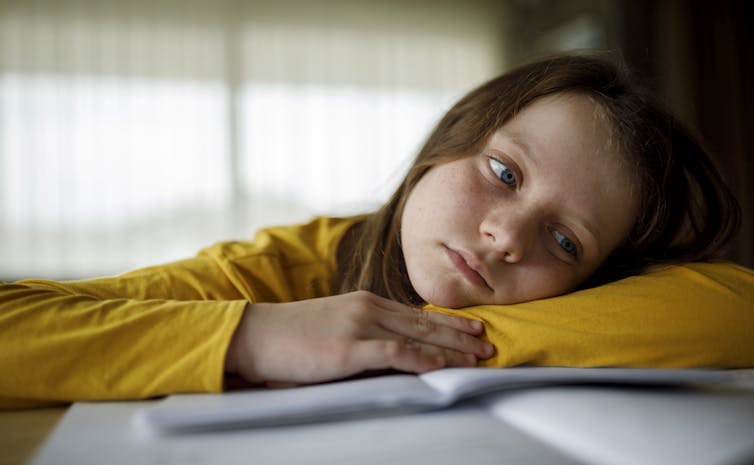
Gregory Fabiano, Florida International University

Curious Kids is a series for children of all ages. If you have a question you’d like an expert to answer, send it to curiouskidsus@theconversation.com.
What causes ADHD and can it be cured? – Geneva B., age 17, Philippines
Attention-deficit hyperactivity disorder is a common, yet often misunderstood, mental health condition.
Symptoms include inattention, overactivity and impulsivity – behaviors everyone experiences at one time or another. For people with ADHD, these behaviors happen frequently and interfere with everyday life at school, at home and everywhere else.
ADHD affects more than 6 million U.S. children. People who have ADHD develop symptoms by age 12, and it usually continues into adolescence and young adulthood. The condition can affect people throughout their whole life.
On average, two students in every U.S. classroom have it. It is important to note that ADHD is just one way of defining a person’s behavior. It has nothing to do with how smart you are or whether you can make friends or excel at sports, music or art, or about any other strengths.
What does and doesn’t cause ADHD
Nobody really knows exactly what causes ADHD. Scientists think that genes may play a role, but no one knows exactly how at this point. Based on years of research findings, scientists attribute this condition to a combination of how someone’s brain works and their personal environment.
Research has cast more light on what does not cause ADHD. For example, findings do not support the widespread theories that excessive sugar or too much time on electronics are responsible for growth in the number of children diagnosed with the condition since 1990 – when it was detected in less than 2% of all U.S. children.
Today, at least 9.4% of kids have this diagnosis. Based on all the research I’ve conducted and the other findings I’ve reviewed, I think this increase is caused by better identification and more awareness of ADHD in general, rather than an overall increase in ADHD.
How parents interact with their child, likewise, does not cause ADHD. But children and adolescents with ADHD have many behaviors that require more parental involvement than their peers.
Changing behaviors as therapy
Most psychologists think about ADHD as a characteristic that, like eye color or height, can’t be changed. Doctors can’t cure ADHD, just like they can’t double the length of your legs.
If someone had a hard time reaching a high shelf, would you tell them they just need to be taller? Of course not. But you could suggest they use a stepladder.
The good news is there are ways that people with ADHD can overcome the challenges this condition brings. Evidence supports two distinct kinds of treatments.
Behavioral therapy is typically implemented by parents and teachers working together. It includes setting clear goals and giving feedback on progress toward those goals, usually on a daily basis. Another feature is providing rewards or privileges when people with ADHD meet their goals.
Among the most effective treatments is teaching parents how to pay more attention when their children do their schoolwork and chores and generally behave well. Parents and teachers can help kids by “catching them being good” – rather than through correction and punishment. As they get older, children and teens with ADHD can set goals for themselves and work hard to learn ways to keep organized and manage their day.
Behavioral therapy makes a difference because ADHD works like a light operated by a dimmer switch. Rather than simply being turned on or off, it can be turned up to a bright level or dialed down to a faint glimmer. ADHD symptoms, similarly, can increase or decrease in response to particular situations and interactions.
Medications can help
Prescription stimulant drugs, such as Adderall and Ritalin, can help many people with ADHD focus longer. Like with all medications, however, some people can’t take them due to side effects. Some nonstimulant drugs are available, but they generally are less effective.
Researchers have found that the best approach is when behavior therapy begins first, especially for young children with ADHD.
ADHD can hinder big transitions. In childhood and young adulthood, that includes starting middle school or high school, learning to drive, going to college or entering the workforce. I believe that extra attention and treatment are usually required at those times.
Many years of research have led me to believe people with ADHD can be successful in the long run when they, their families and their teachers work as hard as is necessary to build skills and change behavior patterns that complicate everyday life. It also helps when they get that support for as long as is needed.
Hello, curious kids! Do you have a question you’d like an expert to answer? Ask an adult to send your question to CuriousKidsUS@theconversation.com. Please tell us your name, age and the city where you live.
And since curiosity has no age limit – adults, let us know what you’re wondering, too. We won’t be able to answer every question, but we will do our best.![]()
Gregory Fabiano, Professor of Psychology, Florida International University
This article is republished from The Conversation under a Creative Commons license. Read the original article.
The views and opinions expressed in the article are solely those of their authors, and do not necessarily reflect the opinions and beliefs of WomenInScience.com.